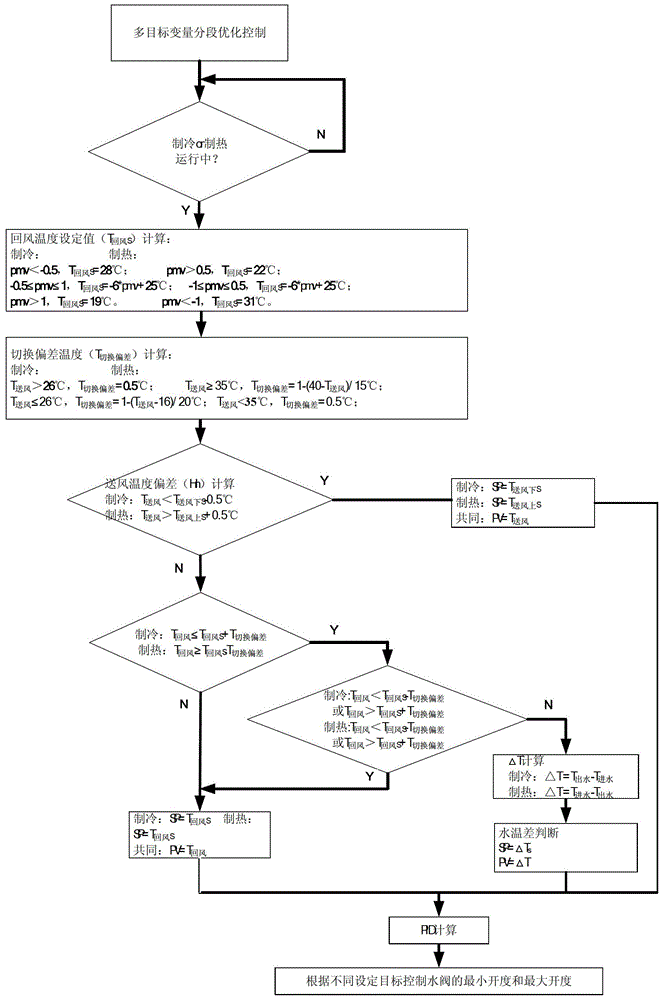Control method of air conditioner and air conditioning unit
A control method and technology of an air-conditioning unit, applied in control input involving air characteristics, space heating and ventilation control input, space heating and ventilation, etc. Problems such as poor design matching, to achieve the effect of satisfying comfort and reducing opening
- Summary
- Abstract
- Description
- Claims
- Application Information
AI Technical Summary
Problems solved by technology
Method used
Image
Examples
Embodiment Construction
[0034] Embodiments of the invention are described in detail below, but the invention can be practiced in many different ways as defined and covered by the claims.
[0035] The present invention adopts a multi-objective variable (including return air temperature, water temperature difference, supply air temperature, etc.) subsection optimization strategy control method, and adjusts the opening of the water valve in a PID control mode, so that the combined air conditioner equipment can More energy-saving, more comfortable, safer and more reliable.
[0036] The inventor’s long-term observation of the air-conditioning unit found that in the actual operation process, the set value of the return air temperature changes synchronously with the change of the indoor comfort index PMV parameter index. According to the indoor comfort index PMV and the return air temperature set value T 回风S The functional relationship between, choose a reasonable T 回风S , with a reasonable T 回风S As the c...
PUM
 Login to View More
Login to View More Abstract
Description
Claims
Application Information
 Login to View More
Login to View More - R&D
- Intellectual Property
- Life Sciences
- Materials
- Tech Scout
- Unparalleled Data Quality
- Higher Quality Content
- 60% Fewer Hallucinations
Browse by: Latest US Patents, China's latest patents, Technical Efficacy Thesaurus, Application Domain, Technology Topic, Popular Technical Reports.
© 2025 PatSnap. All rights reserved.Legal|Privacy policy|Modern Slavery Act Transparency Statement|Sitemap|About US| Contact US: help@patsnap.com


